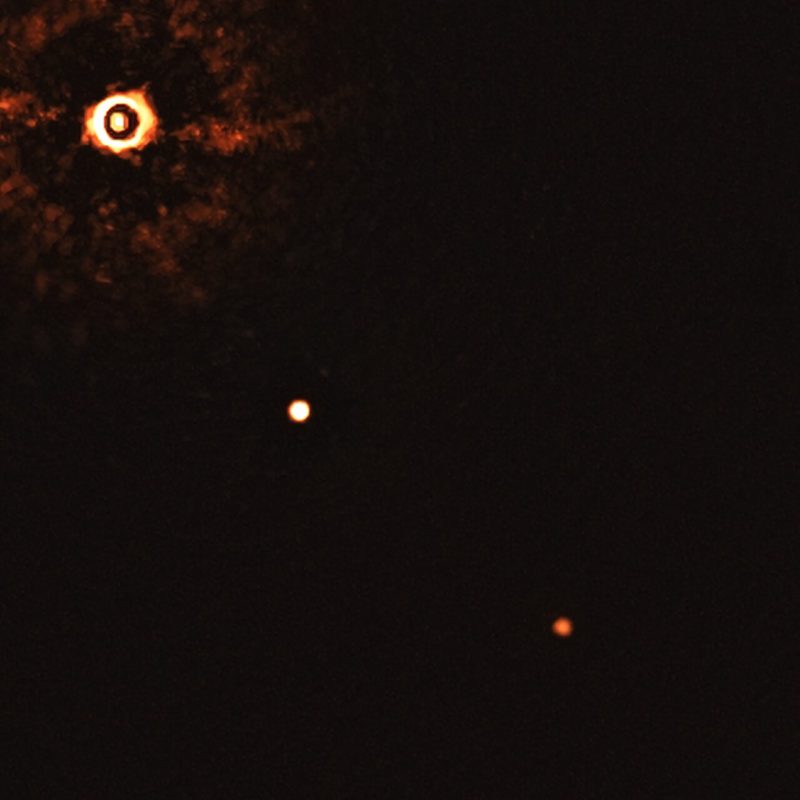How would our solar system look from the vicinity of another star? Using technologies similar to ours, alien astronomers would have a tough time photographing our small, rocky Earth. They might more easily manage to capture images of our solar system’s biggest planets, the large gaseous worlds Jupiter and Saturn. Of the thousands of exoplanets discovered so far orbiting distant stars, earthly astronomers have captured direct images of only a very few. In each of these images, only one planet can be seen. Now astronomers say they’ve acquired a first-ever direct image of two giant exoplanets, orbiting a sunlike star.
The astronomers were using the SPHERE instrument on the Very Large Telescope (VLT) of the European Southern Observatory. The exciting peer-reviewed results were published in The Astrophysical Journal Letters on July 22, 2020.
This planetary system orbits the star TYC 8998-760-1. It’s 300 light-years away in the direction of the southern constellation Musca the Fly. The system seems to resemble our own solar system, but is much younger.

Here’s the young star TYC 8998-760-1, in the upper left. Astronomers blocked its light via a coronagraph; the bright and dark rings around it are optical artifacts (imperfections in the image, not part of the star itself). The 2 bright orbs in the center and bottom right are giant exoplanets, orbiting this star, 300 light-years away. This is the 1st time astronomers have directly photographed more than 1 planet orbiting a sunlike star. Image via ESO/ Bohn et al.
Alexander Bohn, who led the research, is a Ph.D. student at Leiden University in the Netherlands. He stated:
This discovery is a snapshot of an environment that is very similar to our solar system, but at a much earlier stage of its evolution.
While there are several methods for detecting exoplanets by how they affect their stars’ light during a transit or how their gravity slightly tugs at their stars, imaging them directly is still difficult due to the immense distances involved, even for large gas giant-type planets. According to co-author Matthew Kenworthy:
Even though astronomers have indirectly detected thousands of planets in our galaxy, only a tiny fraction of these exoplanets have been directly imaged. Direct observations are important in the search for environments that can support life.
Two other planetary systems had been photographed before with more than one planet each, but neither of the stars were sunlike. VLT had also photographed an exoplanet orbiting a brown dwarf – a type of “failed star” – back in 2004. This, however, is the first time that two planets have ever been imaged around a sunlike star. Maddalena Reggiani, a postdoctoral researcher from Belgium, said:
Our team has now been able to take the first image of two gas giant companions that are orbiting a young, solar analog.
"direct" - Google News
July 26, 2020 at 06:32PM
https://ift.tt/2WWsqPP
1st direct image of 2 giant exoplanets orbiting a sunlike star - EarthSky
"direct" - Google News
https://ift.tt/2zVRL3T
https://ift.tt/2VUOqKG
Direct
Bagikan Berita Ini














0 Response to "1st direct image of 2 giant exoplanets orbiting a sunlike star - EarthSky"
Post a Comment